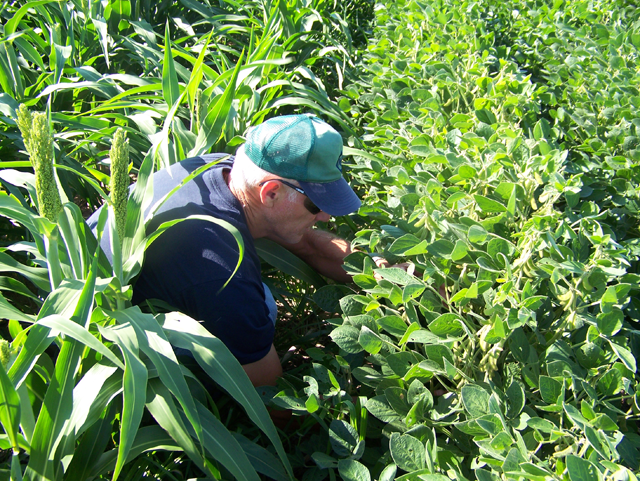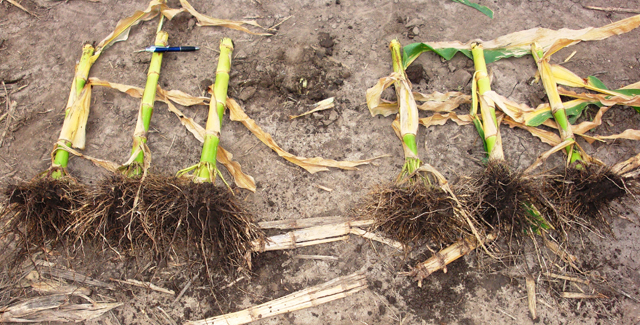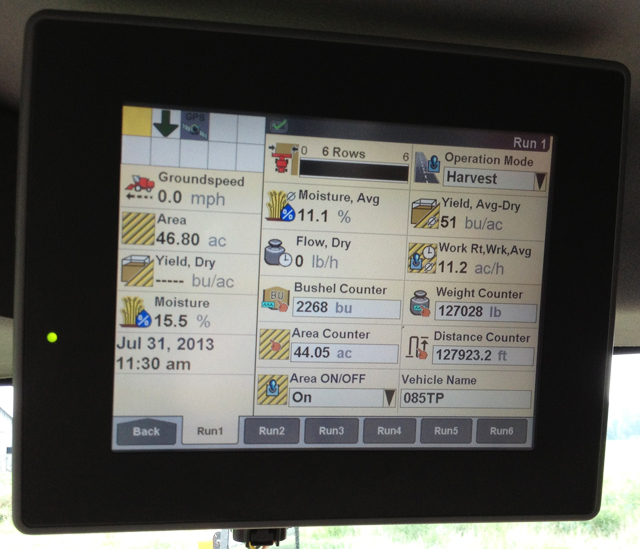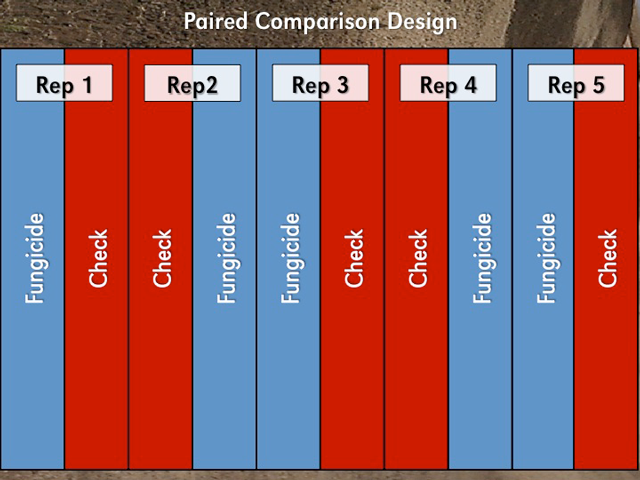Data collection is a key element of on-farm research. It’s important to think through what data you need to collect before you conduct your study. Part of data collection is information you typically record:
- Planting and harvest dates
- Hybrids/varieties
- Plant populations at harvest
- Chemical applications
- Rainfall/irrigation, etc.
Additional data collection may include photos at various crop growth stages, root digs, node and/or pod counts, soil samples, tissue samples, percent stalk rot, disease/insect/weed pressure, storm damage, etc.



Accurate notes during the season allow you to better interpret the data once the crop is harvested. Regularly walking through the comparison field strips will help you identify anything unusual in the field such as deer or other damage. Take notes of damage and sketch a map of the location. If available, use a GPS device to map the damaged area(s). The map will be helpful during harvest to either exclude the data from the damaged areas or help in drawing conclusions from the data. Photographs of the crop and any abnormalities also may be helpful. These records and notes taken during the season may be invaluable to interpretation of the results.
Yield data collected during harvest is very important and should be done according to your research design. Harvest weights can be collected with a calibrated weigh wagon or yield monitor. Also record grain moisture and determine if you need test weights.
An Excel® spreadsheet has been developed to capture all the essential information you’ll need for your on-farm research record. If you’re participating in the Nebraska On-Farm Research Network, you’ll want to share your research plan with Extension Educators Keith Glewen or Gary Zoubek or your local Extension educator.
